While the remainder of New Zealand is at 'Alert Level 2', the government have advised more restrictions on travel to and from Auckland. This means that at this time you can only fly into Auckland on a domestic flight if you are returning home, an essential worker or are travelling to Auckland to undertake an essential service.
You can also travel in Auckland to catch an international flight departing from Auckland Airport or transit through the airport to catch an outbound international flight or domestically on flights, but must not leave at Auckland unless you live in Auckland or are undertaking essential travel.
This will hopeful be just a short-term limitation and the airport is working to separate its international terminal into two zones part of a plan to protect the health and safety of people flying to and from countries with which New Zealand has formed a safe travel bubble, including an anticipated Cook Islands-New Zealand travel bubble.
International Terminal Zone A, Safe Travel area, the main pier to the south, gates 1-10, will be used by people travelling to and from countries with which New Zealand has formed a safe travel bubble. People who have been in New Zealand for more than 14 days and are departing on international flights will also use Zone A where retail and food and beverage options will be available;
International Terminal Zone B, Health Management area will represent a second self-contained zone created out of Pier B, gates 15-18, the pier that points to the west. This will be used for travellers arriving from countries with which New Zealand does not have a safe travel bubble, and who are required to undergo either managed isolation or quarantine. It will also be used for passengers transiting through Auckland Airport and just a limited food and beverage provision will be made available via vending machines.
NETWORK MAP (as at 10-Aug-2020)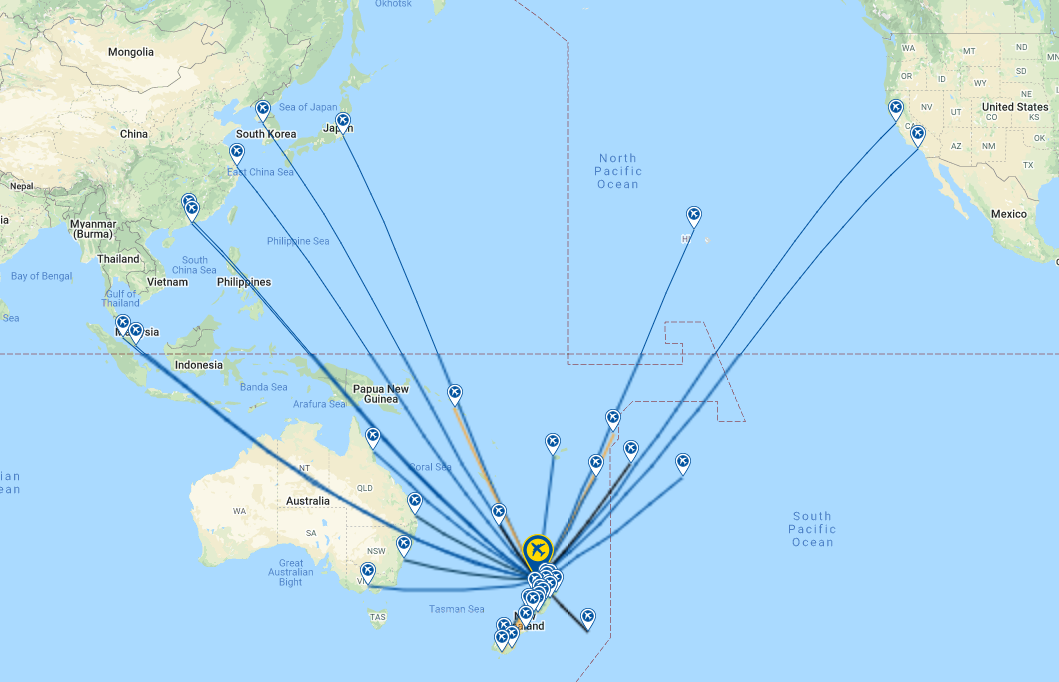
GLOBAL RANKING (as at 10-Aug-2020)
DESTINATIONS (as at 10-Aug-2020)
ANNUAL CAPACITY (2012-2020*)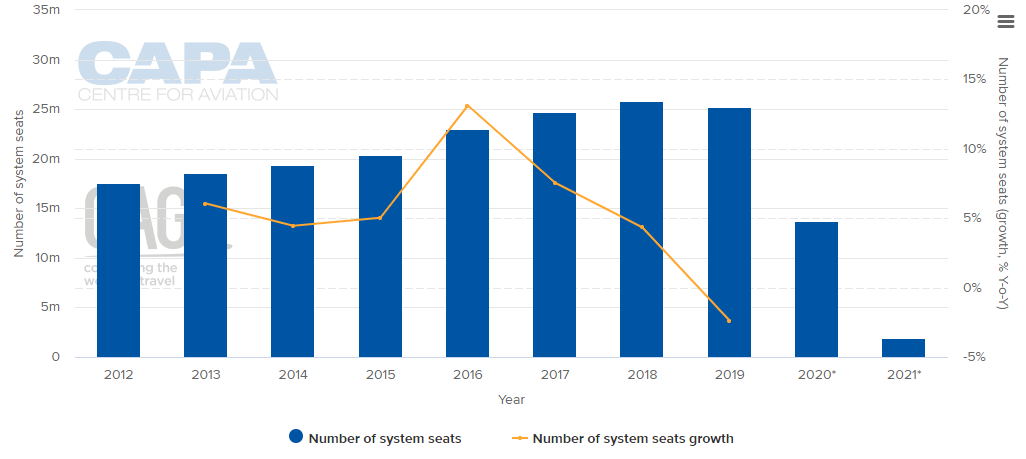 NOTE:The values for this year are at least partly predictive up to 6 months and may be subject to change
NOTE:The values for this year are at least partly predictive up to 6 months and may be subject to change
WEEKLY DOMESTIC CAPACITY (2017 - 2020*)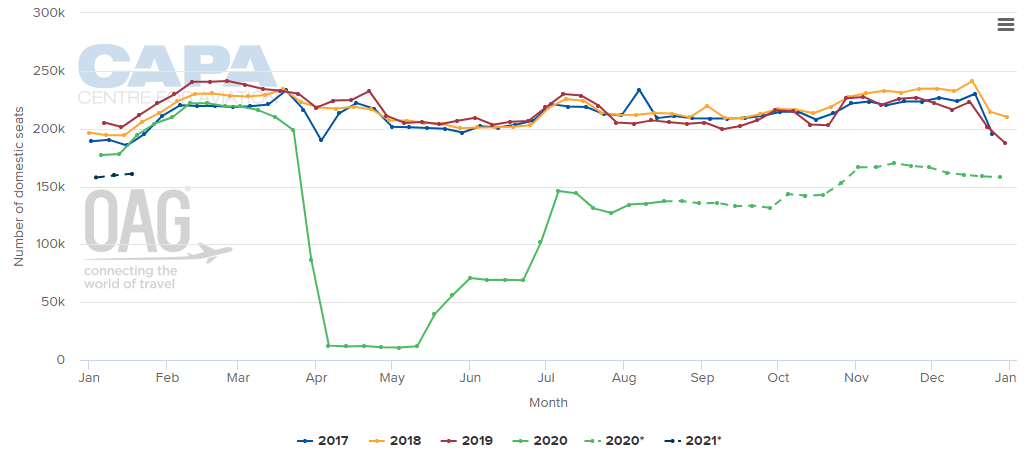 NOTE:*the values for this year are at least partly predictive up to six months and may be subject to change.
NOTE:*the values for this year are at least partly predictive up to six months and may be subject to change.
WEEKLY INTERNATIONAL CAPACITY (2017-2020*) NOTE:*the values for this year are at least partly predictive up to six months and may be subject to change.
NOTE:*the values for this year are at least partly predictive up to six months and may be subject to change.
CAPACITY SPLIT BETWEEN DOMESTIC AND INTERNATIONAL OPERATIONS (w/c 10-Aug-2020)
CAPACITY SPLIT BETWEEN LOCAL AND FOREIGN OPERATORS (w/c 10-Aug-2020)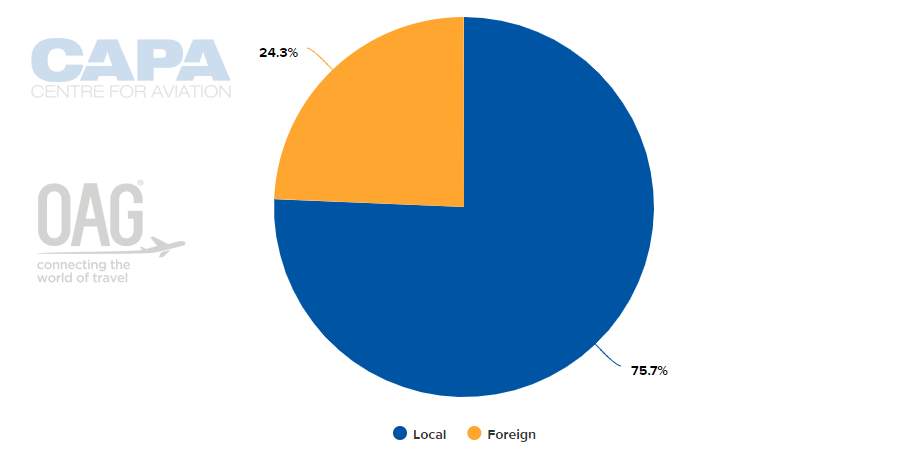
LARGEST AIRLINES BY CAPACITY (w/c 10-Aug-2020)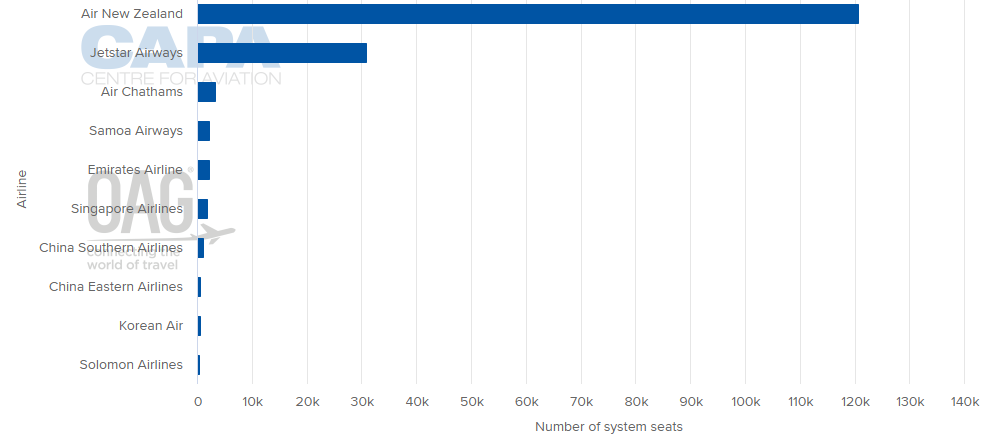
LARGEST DOMESTIC DESTINATION MARKETS (w/c 10-Aug-2020)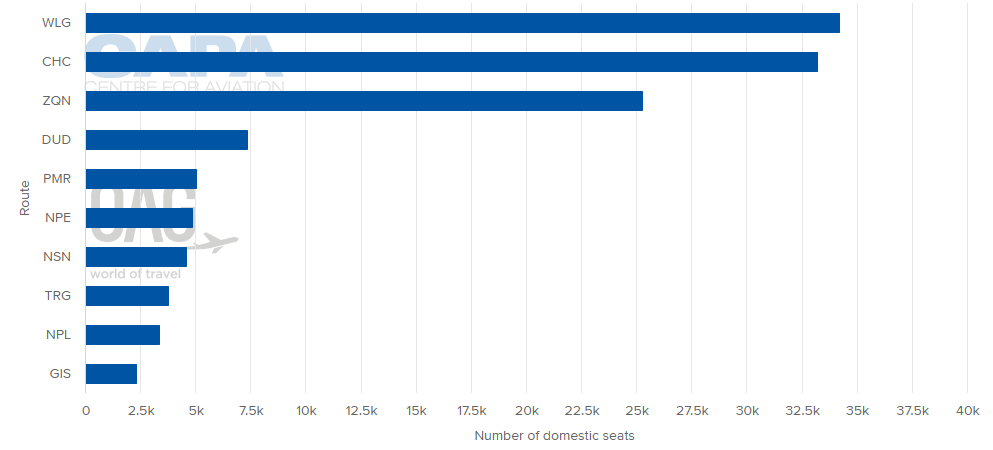
LARGEST INTERNATIONAL DESTINATION MARKETS (w/c 10-Aug-2020)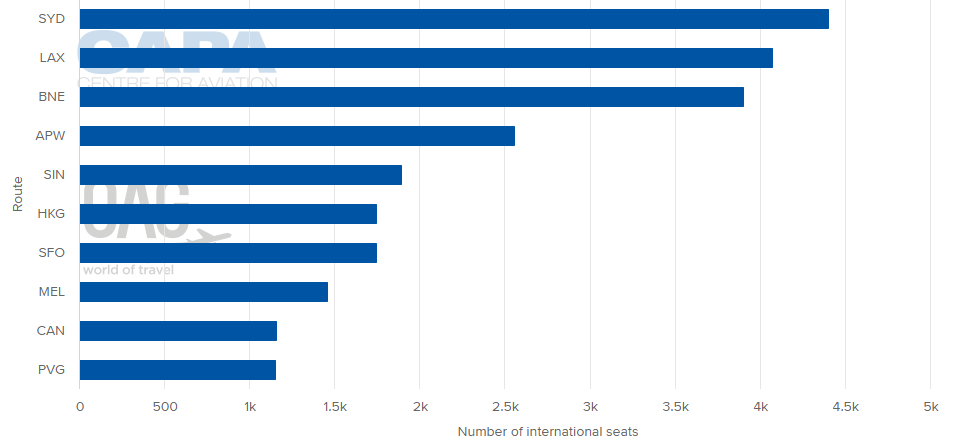
AVERAGE FLIGHT LENGTH (w/c 10-Aug-2020)
AIRLINE BUSINESS MODEL CAPACITY SPLIT (w/c 10-Aug-2020)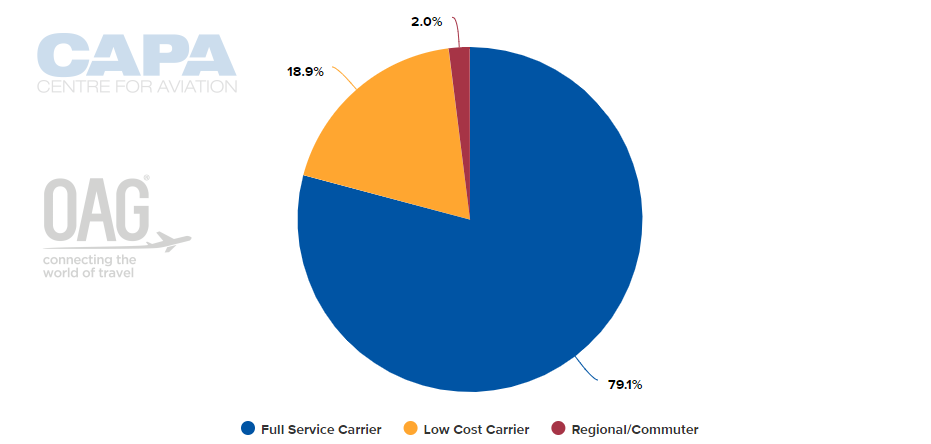
ALLIANCE CAPACITY SPLIT (w/c 10-Aug-2020)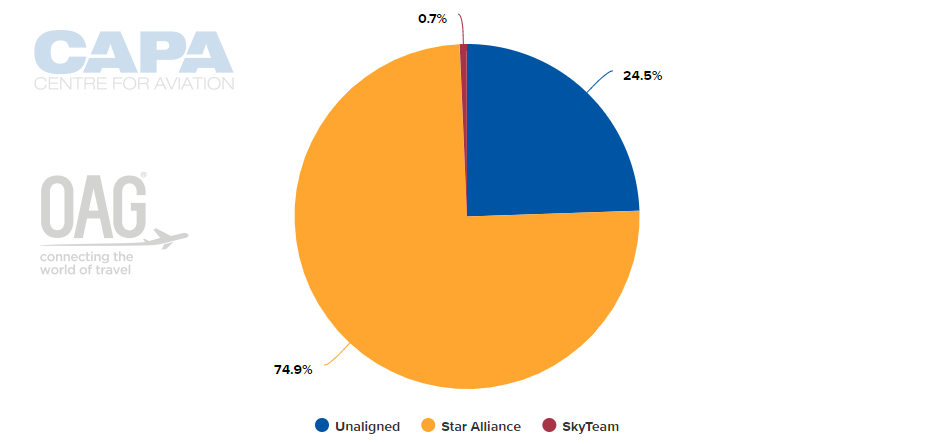
INTERNATIONAL MARKET CAPACITY BREAKDOWN BY REGION (w/c 10-Aug-2020)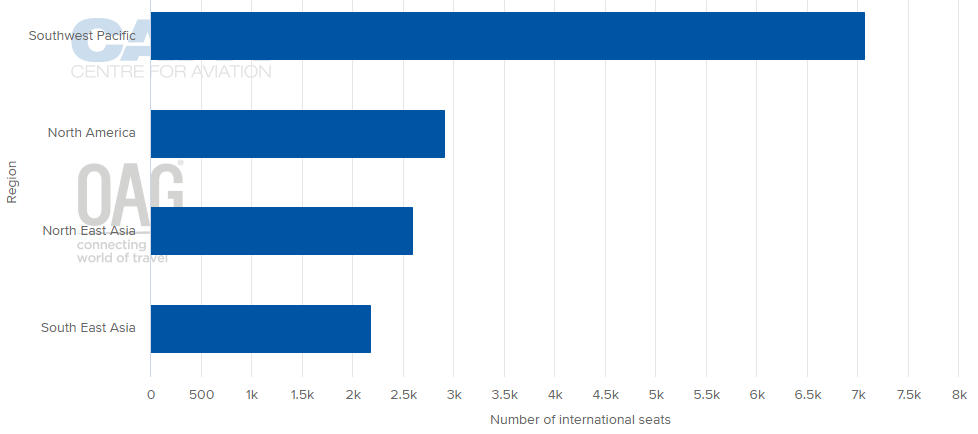
DEPARTING SYSTEM SEATS BY CLASS (w/c 10-Aug-2020)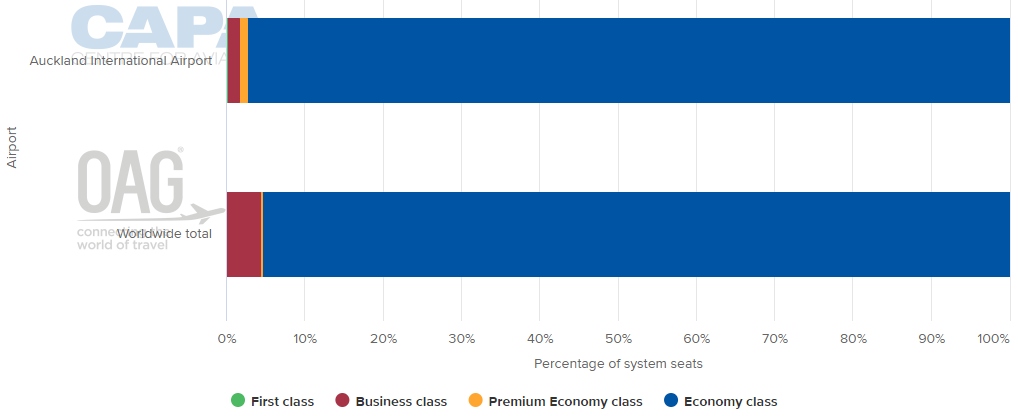
AIRCRAFT OPERATIONS BY MOVEMENTS (w/c 10-Aug-2020)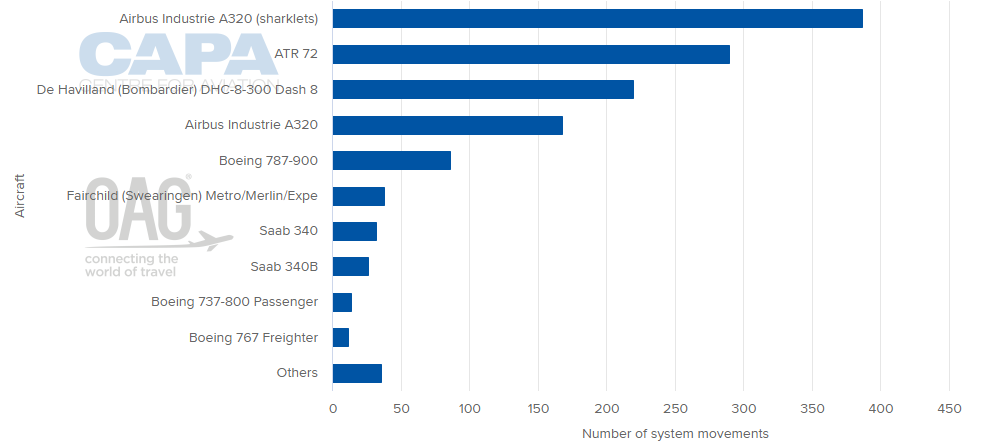
MORE INSIGHTS...
CAPA: 80% recovery in domestic New Zealand airline capacity by end-2020
Trans-Tasman aviation impacted by Coronavirus COVID-19
Domestic airline networks to lead post-COVID-19 AsiaPac rebound
Virgin Australia's survival is important for regional airports